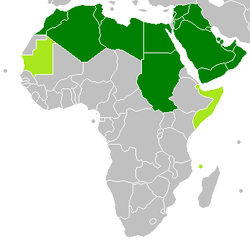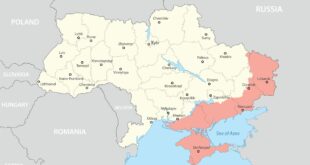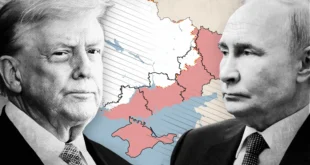Fatma Ahmed Althani
Fatma Althani has presented her desertion with the focus on Arab Free Zone during the period of 1997-2005, which she defended at the Faculty of Economics and Political Sciences (University of Tripoli).
Fatma provided Geostrategic Media with an abstract of her paper and we publish it upon her approval.
Abstract
The literature on achieving Arab economic integration stressed the need for security and stability in the Arab region, and the reorganization and development of Arab armies, as stated in the military annex of the Treaty on Joint Defense and Economic Cooperation between the Arab League countries, and urging the development of the Gulf Cooperation Council, and work to face all challenges that hamper the work of the Arab Maghreb Union and overcome obstacles, with a view to ensuring the activation, development and continuity of the Union, and reviving the Arab Cooperation Council, where the literature stressed the need to re-examine the interdependence between Arab states and developed countries, and among the Arab nations themselves in order to advocate Arab political regimes to adopt the principle of democracy, put into practice the provisions of the joint Arab agreements, and activate the role of specialized Arab organizations. In addition to activating the role of specialized Arab organizations and determining the relationship between dependency, underdevelopment and development, and how to get rid of dependency in all its forms in order to reduce the dependence of Arab countries to developed countries, and to eliminate underdevelopment. Preparation of political and economic researchers studies and research on the impact of internal and external factors affecting each Arab country separately in order to achieve self-integration, and work on economic openness through the application of comprehensive reform programs and then at the level of Arab communities. The problem of the study lies in how and why the Greater Arab Free Trade Area has been stagnant since its establishment despite the existence of commonalities amongst the Arab countries.
This study will add to the previous studies that dealt with Arab economic integration from different aspects and take new track, which is the study of the impact of external factors on the Greater Free Trade Area during the existence of this Area, and how it led to increase the dependence of Arab countries from the economic point of view to developed countries, and review solutions brought forward with the aim eliminating dependency and reach the state of stability. The hypothesis of the research study is that external factors have formed obstacles in face of the establishment and development of the Greater Free Trade Area.
The most important reasons to study this research is to identify the reasons for the failure of joint Arab economic work, and to clarify the most important difficulties and challenges that have been an obstacle to joint economic action during the past decades since the announcement of the League of Arab States on 22/3/1945 of the twentieth century until the date of creating the Greater Free Trade Area, and work towards finding appropriate solutions to it, which in turn ensures the success of the establishment of the Area and its development, especially that the achievement of Arab economic integration makes the Arab region of economic, social, cultural and security might at the international level, and contributes to finding solutions to all Arab-Arab conflicts, especially since the Arab world occupies a position of geostrategic importance politically and economically between the continents of the ancient world: Africa, Asia and Europe.
The Greater Arab Free Trade Area is important because it achieves Arab economic integration, which leads to political integration as a result. This is due to the fact that the Arab world has a set of characteristics that make political and economic integration easy.
We point out that the penetration of developed countries in the Arab countries and the extension of their economic control over them made them unable to disengage from the developed countries and get rid of the constraints of economic dependence, which in turn led to political dependency, as this led to the fall of the Arab countries under the weight of economic exploitation and increasing the degree underdevelopment and poverty.
The importance of investigation in this research is that the catalyst for the success of the Greater Arab Free Trade Area and the achievement of political and economic integration is the natural elements that are common within the Arab countries that are not separated by geographical boundaries such as mountains, rivers or seas. Likewise, the natural features and characteristics that link between the Arab countries and their peoples, namely the similarity of language, religion, culture, customs, traditions, common history and unity of destiny, in addition to the elements of integration that ensure the desired success, of the most important elements we can mention the degree of identity or common loyalty and congruency, reciprocal benefit between the units for the advantage and the possibility of establishing contact, economic and social interaction between the parties of integration and assimilation. Here, coherent gains and losses are assumed to be consistent, which could significantly increase political and military capacity and economic growth. Together, these factors provide incentives for integration. Consequently, emphasis was placed on the study of each external factor and its impact on the establishment and development of the Greater Arab Free Trade Area from the Arab Gulf in the East to the Atlantic Ocean in the West.
The most important objectives of the Greater Arab Free Trade Area is to study the impact of external factors on the region and overcome obstacles, and the implementation of the decisions of the Arab final decrees promulgated in respect of the Greater Arab Free Trade Area since its announcement on 17/2/1997 to 2005 of the Greater Arab Free Trade Area. This period is considered as the stage of establishing the Greater Arab Free Trade Area where part of these final resolutions were devoted to discussing the establishment and development of the Area, taking into consideration that the Arab economic reports issued annually by the Arab Monetary Fund and the Organization of Arab Petroleum Exporting Countries, Arab Economic and Social Development Fund and the General Secretariat of the League of Arab States have dedicated a chapter explaining the development of the Greater Arab Free Trade Area, the most important problems and difficulties faced, and the review of the proposed solutions to rise above the obstacles.
In the first chapter of this study, emphasis is placed on the concept and definition of integration and the basic theories of integration: federal theory, communication theory, traditional functional theory, modern functional theory and explaining how to achieve economic integration. The study of integration attempts in the Arab world requires the need to study and review the foundations of the global economic system, and re-examine the restructuring of international economic relations, which are of course inseparable from international political relations, with a view of directing all Arab countries towards development and integration as a result of the escalation of the struggle for achieving full national independence and then maintain and preserve it.
Work on achieving Arab integration began since the signing of the Alexandria Protocol on 7/10/1944, which aimed at enhancing the means and strengthening the ties of Arab economic cooperation. However, the outcome of political and economic agreements and attempts of cooperation and integration came in the context of political pressures experienced by the Arab region, and this explains to us that the making of these political, economic and social agreements between the Arab countries were not the result of real conviction among the decision-makers and they were without the preparation of research and reports on the impact of internal and external factors on each Arab country separately, and on the Arab regional groupings, without specifying the expected results when these agreements enter into force due to the inadequacy of the strategic plans and studies of joint Arab action with the impact of internal and external factors on each Arab state, and at the level of the Arab region we can mention just for example: the experience of Egyptian-Syrian unity, which represents the only model of full constitutional unity in the Arab world since the Second World War in January 1958.
The platform of political action and economic integration between Egypt and Sudan in Alexandria on 11/2/1974, where it was stressed the importance of civilizational, historical, intellectual, cultural and intellectual factors and the common interest between the two countries and the unification of human and material capabilities in the two countries. In March 1975, an agreement was signed on a program of work for cooperation between Syria and Jordan with the aim of completing the final phase of the provisions of the Arab Common Market and lifting restrictions on the exchange of goods produced in both countries without reservation, although all Arab economic charters clarify the legal and constitutional steps for Arab economic cooperation and integration; as it was culminated in the announcement of the Greater Arab Free Trade Area on 17/2/1997.
The second chapter dealt with two main axes: Arab Economic Cooperation and the Greater Arab Free Trade Area. A brief summary can be written. The joint Arab action has been linked to the League of Arab States since its inception and its charter, agreements, resolutions and institutional structures that emerged from it until the announcement of the Greater Arab Free Trade Area in 1997, which embodies the “dependent variable”, and discussed the Arab summits held since 1946 joint Arab action. The Arab Summit, held in Amman in November 1980, is the most important among Arab summits as it is the first summit to establish the first two economic documents approved at the summit level:
1- The National Economic Action Charter.
2- The strategy of joint Arab economic action.
The joint Arab economic action of the 1950s and 1960s is characterized by the crystallization of the institutional and legal structure of the joint Arab economic work. The social dimension has been integrated within the responsibilities of the joint Arab economic action since the beginning of the eighties, and includes all political, economic, social, cultural, scientific and technological relations that take place within the framework of the Arab League and its organs.
As a result, the name of the Economic Council was changed by virtue of article 8 of the Treaty on Joint Defense and Economic Cooperation among the Arab League States to the “Economic and Social Council”. During the 1980s, the Arab countries sought to establish Arab regional blocs by entering into a unity between the neighboring countries. This is similar to the trend of many countries in the world towards the establishment of economic blocs.
In the third chapter, the most important external factors, namely the “independent variable”, which constitute an obstacle to the establishment of an Arab political and economic bloc, in spite of the natural resources enjoyed by the Arab World, were reviewed, given that there are internal influencing factors in each Arab country separately, which the degree of influence varies from one country to another and from Arab block to the other. Accordingly, the Arab countries have not been able to achieve Arab economic integration due to the influence of external factors on the establishment of the Greater Arab Free Trade Area, as follows:
- Globalization.
- The New World Order.
- Regional and international economic blocs.
- Control of developed countries.
The extent of influence of the external factors on the establishment of the Greater Arab Free Trade Area led to economic dependence of the Arab countries to the developed countries.
This would require the need to seek the best means in order to ensure the independence of Arab countries and achieve integration and satisfy the basic needs of the Arab man, in a manner that ensures that the Arab countries do not depend on the industrialized countries and regional and international economic institutions and economic blocs. In particular, the World Trade Organization (WTO) and the Euro-Mediterranean Partnership embody an unequal or unbalanced alliance because of lack of parity with the Mediterranean Arab countries on one hand and because of the remarkable influence enjoyed by developed countries compared to the influence of Arab countries on the other hand. Developed countries, the most powerful and influential party in the WTO, and the Barcelona Process, should outweigh the benefits to the Arab side, which is the least influential and the weakest. These benefits include gains in the political, security, economic, financial and Social and cultural.
 Geostrategic Media Political Commentary, Analysis, Security, Defense
Geostrategic Media Political Commentary, Analysis, Security, Defense





